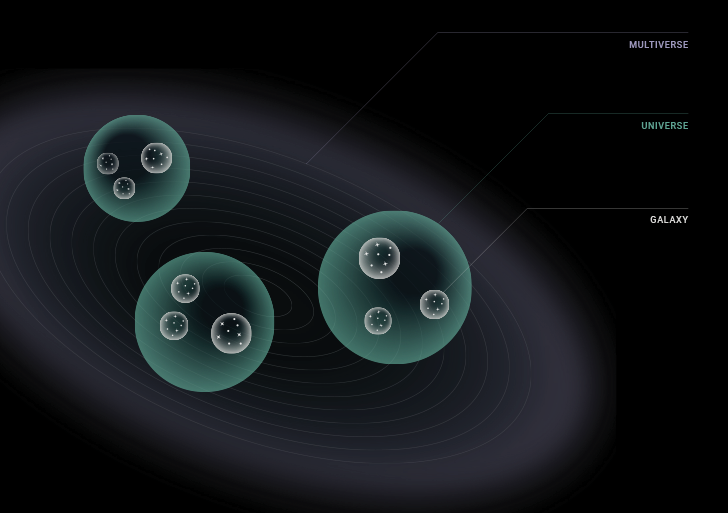The Infinite Universes/Multiverse Theory
The multiverse might actually exist.
Have you ever wondered if there might be multiple universes? And perhaps there is another version of you in those universes? Have you ever thought about the Big Bang Theory? According to most scientists, the universe started extremely small and dense. All of the matter in the universe has crammed into a single point. That tiny point randomly erupted at about a force of around 9.578 × 10^29 megatons of explosives. That, and an enormous amount of energy! As the universe was aging, it was expanding at insane speeds. The universe might be infinite, but what is past the observable universe? Is it just black space with nothing? Or maybe there are universes similar to ours, or even some parallel to ours?

Some scientists claim that going on a spaceship with a mission to get to the edge of the universe, will only result in flying past black holes and galaxies forever. Many do not agree with this idea. The infinite universes theory, or multiverse theory, explains that if you go on a spaceship and try to fly to the edge of our universe, you would eventually reach the end and enter a new one, another new one, and then another one, forever. This implies that there could be another Earth-like ours, as well as another you reading this. Sadly, we will probably never know if this is true or not. Earth would be so far away that the light reaching us would take longer than the time our universe has existed. Not only that, but the universe is constantly expanding, so we will never reach another Earth, even with the most advanced technologies.
If we define the universe as “everything that exists,” there is only one universe; however, if we define the universe as “all we will ever see,” more universes may exist. And those universes could be inside a multiverse, which consists of multiple universes. You may be asking yourself, “How big is the multiverse? According to one of Guth’s models, the multiverse has to be at least 10^23 times larger than our observable universe. This means that it has to be 100 billion times larger than anything we can observe with telescopes. There are also multiple levels of the multiverse.
Level I: Space goes beyond what we can see, maybe even forever. There are infinitely many regions where the laws of physics are the same.
Level II: Infinitely many regions exist at the same time as ours but they are disconnected from our multiverse and there could be different laws of physics.
Level III: The time is different than ours. Every universe branches off into a different reality.
Level IV: Universes are generated, maybe even forever. Math laws always stay the same.
We only explored less than 5% of our universe and exploring others is just a dream and it will probably never happen because we cannot go past the observable universe. But who knows, maybe one day we will invent technology for interdimensional travel.
RELATED STORIES:
https://www.livescience.com/how-was-the-universe-created
https://iai.tv/articles/george-ellis-we-cant-know-if-the-universe-had-a-beginning-auid-2298
https://www.wired.com/brandlab/2018/01/three-theories-infinite-earths
https://www.space.com/31465-is-our-universe-just-one-of-many-in-a-multiverse.html
https://bigthink.com/starts-with-a-bang/universe-infinite/
TAKE ACTION











